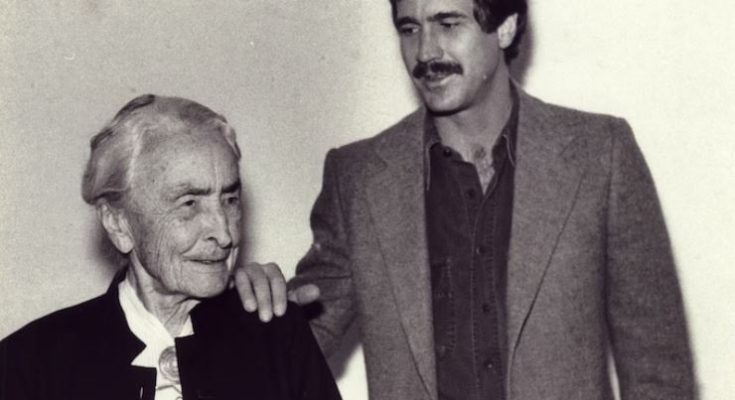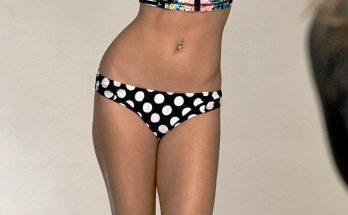After about eight months of laboring and several attempts to make O’Keeffe’s acquaintance, Mr. Hamilton knocked at the back door of O’Keeffe’s main home, 16 miles away near the hamlet of Abiquiu, and asked through the screen door if she had any work for him. She said no.
O’Keeffe quizzed him about his background, learning that he was an artist with a college degree. Fluent in Spanish, he could speak to gardeners and other workers on O’Keeffe’s property. Mr. Hamilton, who was 58 years her junior, became her driver, office assistant and traveling companion.
“She was no flower,” he told Harper’s Bazaar. “And when she was in a bad mood, boy, she was tough! But over time she developed an affection for me that I wasn’t expecting or looking for.”
Mr. Hamilton always addressed her in public as “Miss O’Keeffe,” but their bond grew so strong that there were snickers of suspicion and innuendo about their relationship. Mr. Hamilton often stayed overnight at her house — but so did other caregivers, as O’Keeffe grew increasingly frail and lost much of her eyesight.
Mr. Hamilton was accused of preventing O’Keeffe from seeing some of her former acquaintances, including an agent who filed a $13 million lawsuit in 1978 for “malicious interference.” (It was settled out of court.)
“I didn’t put her on a pedestal,” Mr. Hamilton told The Washington Post in 1987, “or say, ‘Oh, I’m so honored,’ or any of that stuff. … I was difficult, and she was difficult. We had contrary natures, and that’s why we got along. We understood each other.”
They remained close even after he married in 1980. Four years later, Mr. Hamilton moved with his wife and two young sons to Santa Fe, where they shared a house with O’Keeffe in her final years.
“She enjoyed being around the boys,” Anna Marie Hamilton recalled in an interview. “She was so close to all of us.”
When O’Keeffe died in 1986 at 98, she left both of her houses and the bulk of her property and artwork — worth an estimated $70 million — to Mr. Hamilton. O’Keeffe’s sister and niece filed suit, accusing Mr. Hamilton of having “undue influence” over her affairs, and contested a 1984 codicil to the will that increased his inheritance.
“I just didn’t think it worth it to fight over wealth and property,” he told The Post. “I had a whole lot to lose and nothing to gain by having my private life aired before the general public.”
After O’Keeffe’s death, Mr. Hamilton helped organize an exhibition of her work at the National Gallery of Art in Washington in 1987 and contributed an essay to the accompanying catalogue. He was also instrumental in creating a foundation that provided financial support for the creation of the Georgia O’Keeffe Museum in Santa Fe.
A South American childhood
John Bruce Hamilton was born in Dallas on Dec. 22, 1945. He was about 3 when his parents moved to South America as missionaries and educators. They lived in Colombia, Ecuador and Venezuela until young Juan, as he became known, was 15. (He legally changed his first name in his 40s.)
After completing high school in New Jersey, he graduated in 1968 from Hastings College in Nebraska with a degree in studio art. He studied art at the Claremont Graduate University in California before setting up a studio in Vermont. An early marriage, to Virginia Weber, ended in divorce.
The couple married in 1980. After O’Keeffe’s death, Mr. Hamilton and his family moved to a ranch on the Hawaiian island of Maui before returning years later to Santa Fe.
In addition to his wife and sons, Albert and Brandon, survivors include a sister and two grandchildren.
As a sculptor, Mr. Hamilton concentrated on smooth, polished abstract pieces that, in some ways, resemble the rocks and animal skulls in O’Keeffe’s paintings.
Mr. Hamilton was on the board of the Georgia O’Keeffe Foundation for many years and donated dozens of her artworks to the museum in Santa Fe. He sold more than 100 items from his private collection at a 2020 Sotheby’s auction for $17.2 million.
More than 40 years after he packed his first shipping crate for O’Keeffe, Mr. Hamilton recalled the second job she gave him. She handed him a gallon jar filled with bent nails and asked him to straighten them with a hammer.
“I told her that I would if she wanted me to, but she could buy new ones for less money,” he recalled to Harper’s Bazaar. “She said, ‘You didn’t go through the Depression. Straighten up the nails.’ So I did.”


